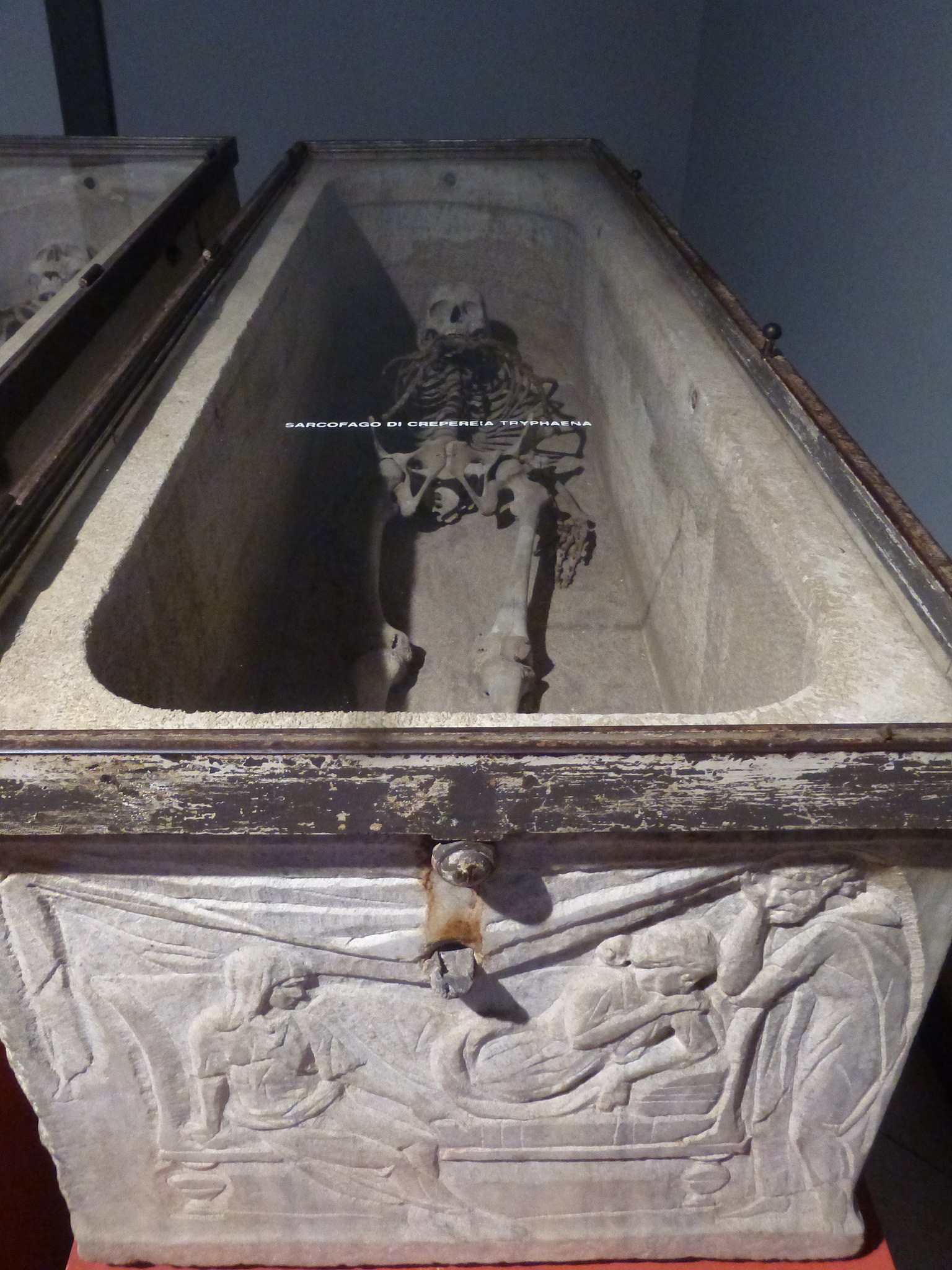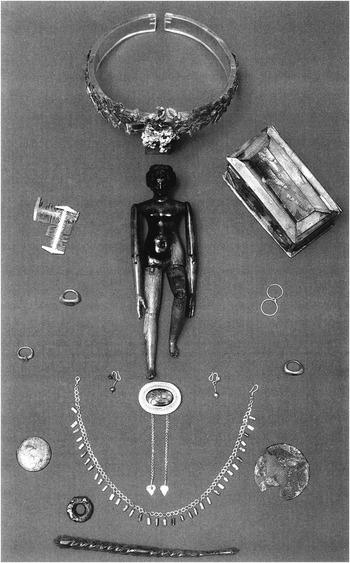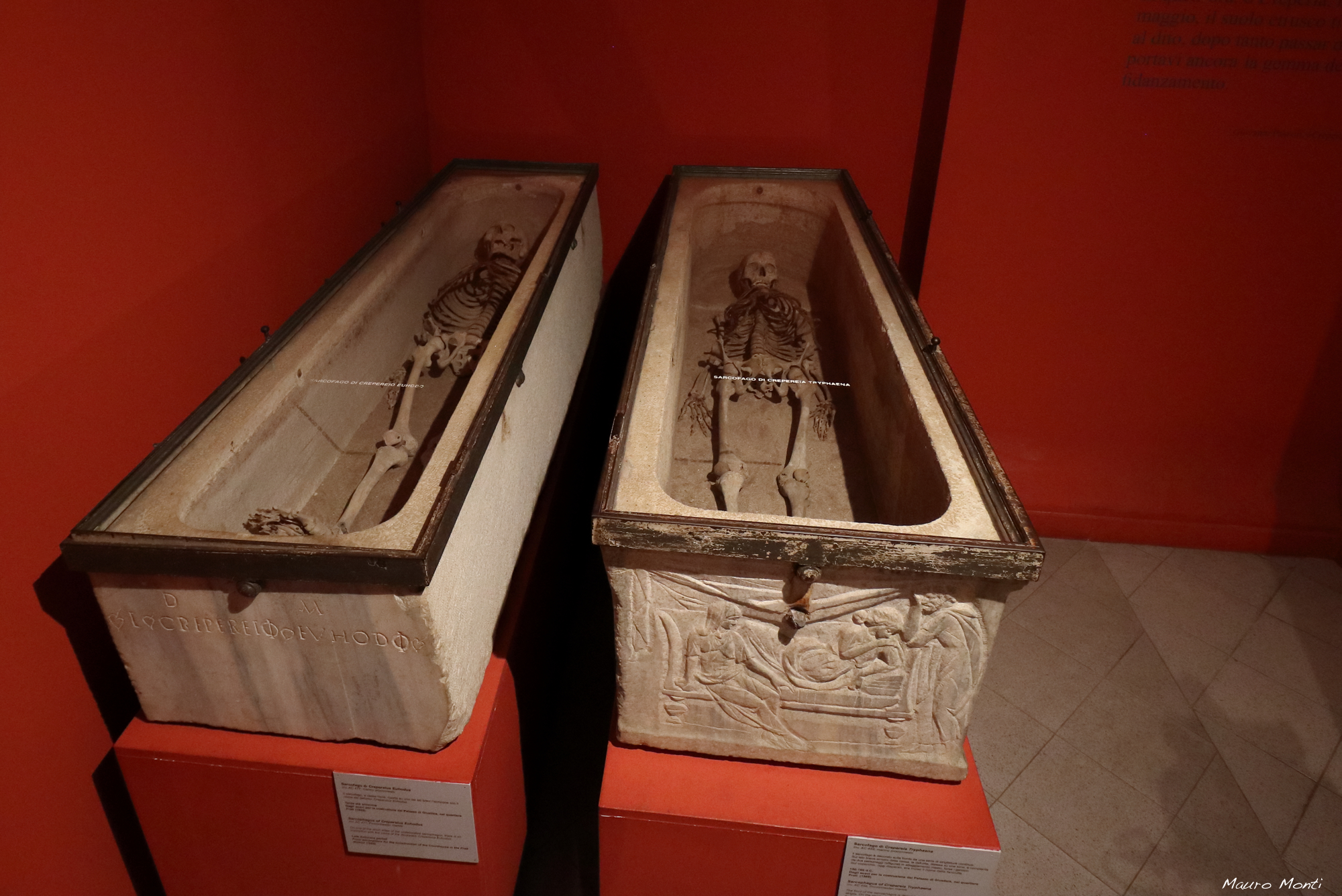In 1993, a remarkable archaeological discovery was made at Vallerano on the Via Laurentina, south of Rome. A sarcophagus containing the remains of a young girl, aged between 16 and 18, was unearthed. This burial, dating back to the second half of the 2nd century AD, revealed an extraordinary array of luxurious items, including gold jewelry, gemstones, and other precious artifacts. These sensational finds are now on display for the first time in an exhibition titled “The Mystery of a Young Girl” at the Accademia Valentino in Piazza Mignanelli, Rome. This article delves into the significance of these discoveries, the historical context of the 2nd century AD, and the intriguing details of the artifacts found.
The Discovery at Vallerano

The excavation at Vallerano revealed a sarcophagus that housed the remains of a girl adorned with an impressive collection of jewelry and artifacts. Among the items were gold necklaces, amulets, rings, and cameo brooches set with various gemstones, including emeralds, sapphires, diamonds, amethysts, sardonyx, and garnets. The burial also included amber hairpins, a large silver hand-mirror decorated with a high-relief mythological scene, and a silver scallop shell, likely used to contain scented oils.
The Exhibition: “The Mystery of a Young Girl”
“The Mystery of a Young Girl” exhibition showcases these artifacts for the first time. Accompanied by other significant finds from girls’ graves of the same epoch, the exhibition highlights the unparalleled sumptuousness of these burials. The show runs until February 18 at the Accademia Valentino and will then travel to the Palazzo Reale in Milan from mid-March to mid-May, and to Verona in the summer.
The Golden Age of the Roman Empire

Edward Gibbon, in his seminal work “The Decline and Fall of the Roman Empire,” described the 2nd century AD as the happiest and most prosperous period in history. This era, particularly the reigns of Antoninus Pius and Marcus Aurelius (138-180 AD), was marked by minimal wars, a flourishing Roman civilization, and exceptional material well-being. Luxury goods from across the world poured into Rome, showcasing the city’s wealth and global connections.
The Origins of the Precious Stones
The gemstones found in the Vallerano tomb offer a fascinating glimpse into ancient trade routes. The diamonds originated from India, the sapphires from Sri Lanka, and the emeralds from Egypt. These precious commodities reached Rome through extensive trade networks, with the Syrian oasis-city of Palmyra serving as a key exchange point. Palmyran merchants traveled widely, reaching as far as the Danube, France, and Spain, and some settled in Rome, bringing with them their oriental customs and practices.

Previous Discoveries of Lavish Burials
The Vallerano find is not the first of its kind. In the late 15th century, another girl’s grave was discovered, though its contents have since been lost. In 1889, the sarcophagus of a girl named Crepereia Tryphaena was found with her jewels at Prati di Castello, and a similar burial was uncovered at Mentana in 1954. In 1964, another rich collection of jewels was discovered in a girl’s grave on the Via Cassia, which also contained an ivory doll. These dolls, believed to have originated in Syria, were sophisticated and articulated, designed to be dressed and were possibly made by emigrant artisans in Rome.
The Significance of the Dolls

The ivory dolls found in these graves provide compelling evidence of the Palmyran connection and the dating of the burials. These dolls, anatomically female with developed hips and busts, were intricately carved and articulated. Crepereia Tryphaena’s doll, in particular, is noted for its sensitive facial features and hairstyle resembling that of Empress Faustina, wife of Marcus Aurelius. These dolls, along with minute make-up boxes, combs, tiny mirrors, and miniature gold earrings, suggest a new tenderness towards children and an interest in their autonomous existence during the 2nd century AD.
The Cultural and Historical Context

The opulent jewelry found in these girls’ graves did not appear to have any particular religious significance but were valued personal possessions. In Roman society, valuable jewelry was considered an asset to be passed down through generations, making the lavish burial of such wealth in a child’s grave a potentially ostentatious and Eastern practice.
Equally mysterious is the presence of the dolls. While it is understandable that bereaved parents might wish to bury a child with their favorite plaything, the regularity of these finds suggests they may have symbolized the children these girls did not live long enough to bear. This speculation, put forth by archaeologist Alessandro Bedini, provides a poignant insight into the cultural practices of the time.
Conclusion
The discovery of the young girl’s sarcophagus at Vallerano offers a fascinating glimpse into the lives and customs of ancient Rome. The luxurious artifacts found in her grave, now showcased in “The Mystery of a Young Girl” exhibition, highlight the wealth and global connections of the Roman Empire during its Golden Age. These burials, with their opulent jewelry and sophisticated dolls, reflect a society that valued its young and mourned their loss deeply. As we continue to unearth and study these ancient treasures, we gain a richer understanding of the complexities and nuances of Roman civilization.